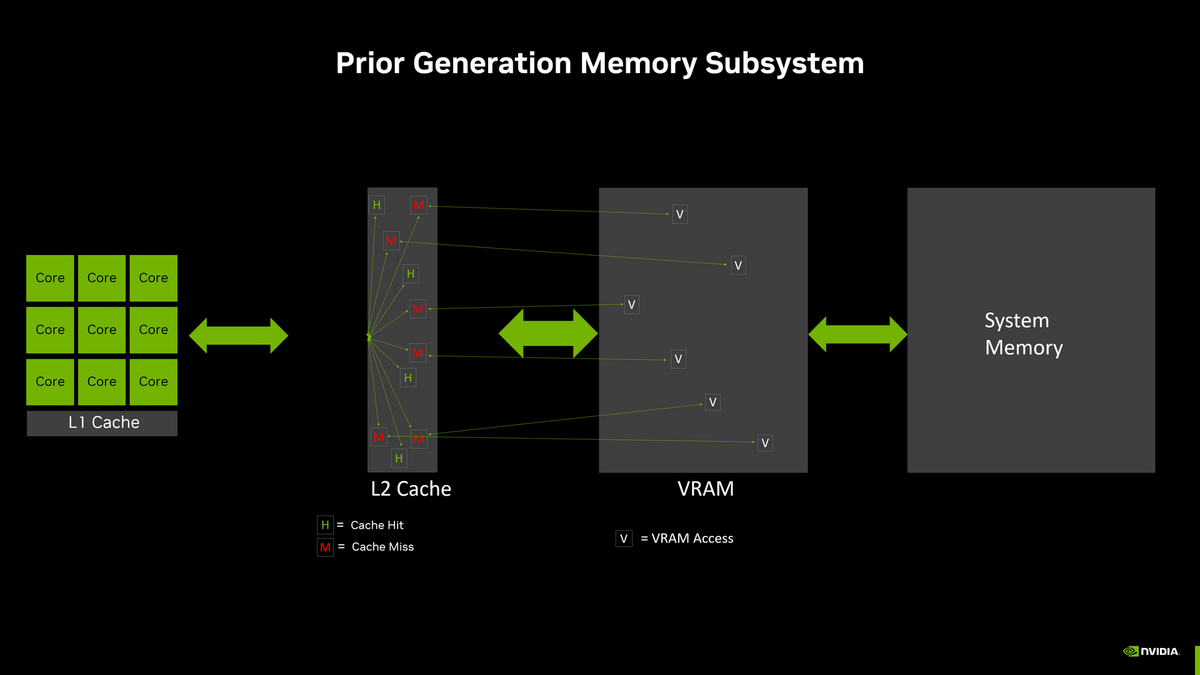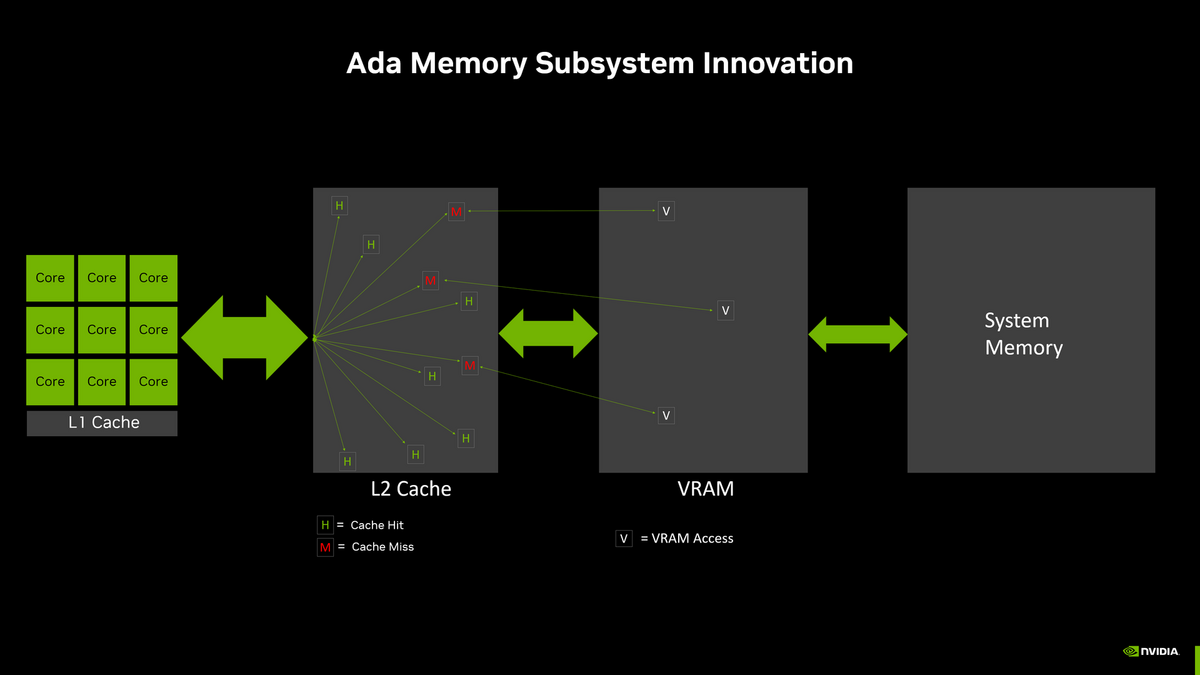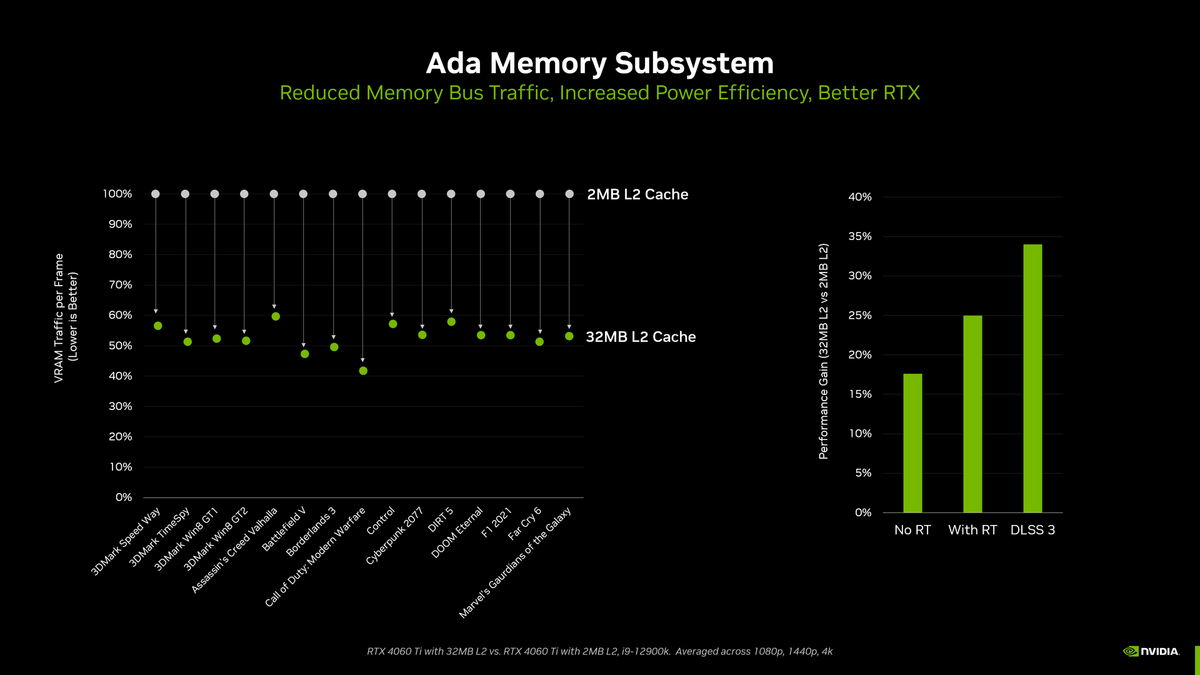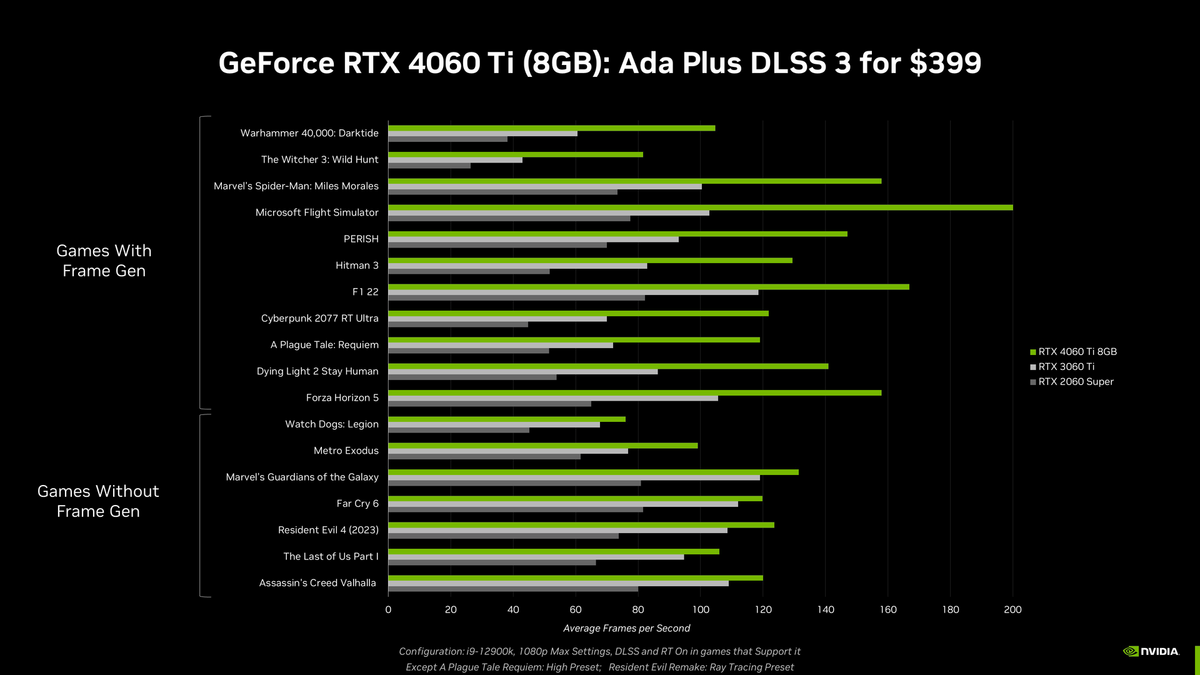The GPUs of graphics cards NVIDIA emphasize the amount of on-board L2 cache… a bit like AMD CPUs, right?
Criticized for the “limited” amounts of video memory (VRAM) built into its GeForces, NVIDIA saw the remarks increase during the recent launch of the GeForce RTX 4070s and the announcement of the GeForce RTX 4060/4060 Ti.
From the L2 cache issue
Three references which are actually distinguished by the amount of memory of “only” 8 GB: for some players it is just right for today’s titles and clearly insufficient for those of tomorrow.
Even more criticized is the bandwidth of certain GeForces. This time, with its 504.2 GB/s, the RTX 4070 is spared, but the RTX 4060/4060 Ti take it for their rank. It is true that, on paper, the 3000 generation has a clear advantage: the RTX 4060/4060 Ti have to settle for 272 and 288 GB/s respectively when the RTX 3060/3060 Ti have a bandwidth of 360 and 448 GB/s.
If NVIDIA recognizes a significant drop – difficult to do otherwise – it refutes the importance of this lag because of another element to be taken into account. Indeed, the RTX 4060/4060 Ti have a much higher L2 cache than their ancestors. An L2 cache which would therefore be able – according to the American company – to compensate for this gap in bandwidth.
To find out more, we invite you to read the article published by NVIDIA’s technical teams on its official blog. However, we will try to clarify things a bit.
NVIDIA increases the L2 cache by 8 times
Like a CPU, a GPU is associated with several levels of cache memory which act as buffers – fast – before it is necessary to access the VRAM. NVIDIA clarifies, “ on previous GeForces, the cache memory was much less important and the GPU was forced to swap more frequently with the VRAM.


© NVIDIA
The images above illustrate the two cases: on the left, on an old GPU, the information missing from the L2 cache leads to regularly turning to VRAM when, in the second case (RTX 4000), the “big” L2 cache makes it possible to respond favorably to many more requests from the GPU. You waste less time digging around in the VRAM, which no longer needs to be so fast.

The thing is schematic and to give it more body, NVIDIA carried out a test that we will never be able to conduct: it compared an RTX 4060 Ti with a 2 MB L2 cache to the real card, with a 32 MB L2 cache. If the result is final, however, we would have liked NVIDIA to also compare to an RTX 4060 Ti with a bandwidth of 448 GB/s.

NVIDIA specifies that applications such as video editing, architectural design or 3D animation have significant VRAM requirements. The firm indicates that, in games, it depends on the image definition and the size of the textures before adding, ” in most games, both versions of the GeForce RTX 4060 Ti (8GB and 16GB) can be played at maximum settings and will deliver the same performance “.
Now imminent, the first tests – on the only 8 GB version of the GeForce RTX 4060 Ti – may allow us to verify all this.
Source : NVIDIA

5